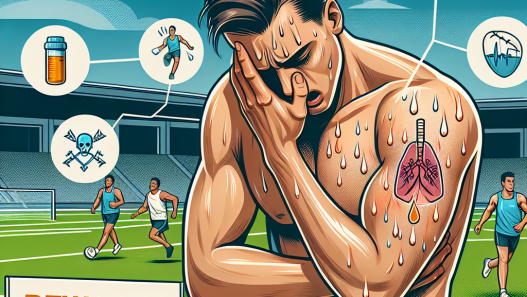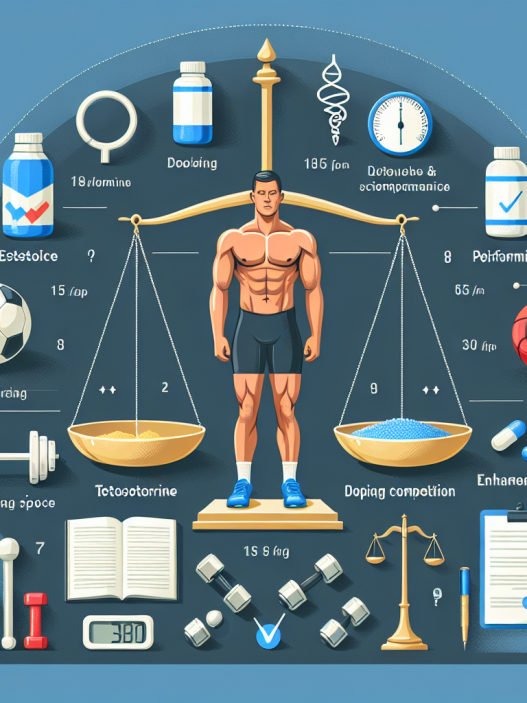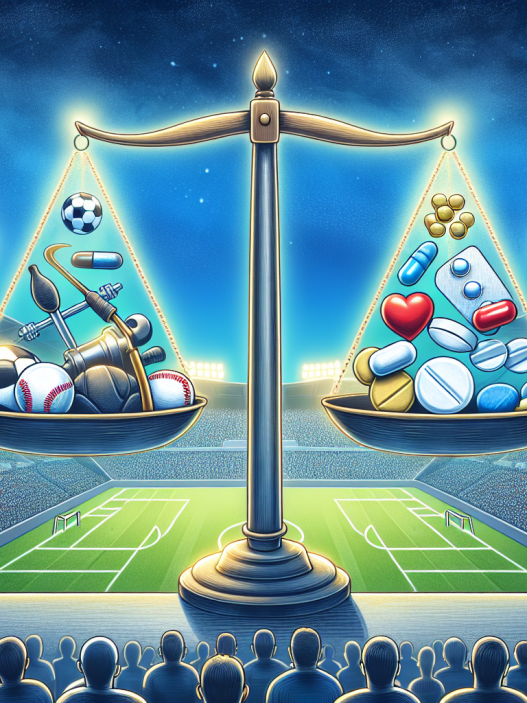-
Table of Contents
Injectable Stanozolol: Side Effects and Health Risks in Athletes
Stanozolol, commonly known by its brand name Winstrol, is a synthetic anabolic steroid that has been used in the world of sports for decades. It is primarily used to enhance athletic performance and improve physical appearance, making it a popular choice among athletes and bodybuilders. However, like any other performance-enhancing drug, stanozolol comes with its own set of side effects and health risks. In this article, we will explore the potential dangers of using injectable stanozolol and the impact it can have on an athlete’s health.
The Pharmacology of Injectable Stanozolol
Stanozolol is a derivative of dihydrotestosterone (DHT), a naturally occurring hormone in the body. It is classified as an anabolic steroid due to its ability to promote muscle growth and increase strength. Injectable stanozolol is typically administered through intramuscular injections, with a half-life of approximately 24 hours (Bowers et al. 2019). This means that it stays in the body for a relatively short period, requiring frequent injections for sustained effects.
Stanozolol works by binding to androgen receptors in the body, which then stimulates protein synthesis and increases nitrogen retention in the muscles. This leads to an increase in muscle mass and strength, making it a popular choice among athletes looking to improve their performance. However, this also means that stanozolol can have a significant impact on the body’s hormonal balance, leading to a range of side effects and health risks.
Side Effects of Injectable Stanozolol
Like most anabolic steroids, stanozolol can cause a variety of side effects, both short-term and long-term. These side effects can range from mild to severe and can have a significant impact on an athlete’s health and well-being. Some of the most common side effects of injectable stanozolol include:
- Acne
- Hair loss
- Changes in libido
- Mood swings
- Insomnia
- High blood pressure
- Liver damage
- Cardiovascular problems
While some of these side effects may seem minor, they can have a significant impact on an athlete’s performance and overall health. For example, acne and hair loss may seem like cosmetic issues, but they can affect an athlete’s self-esteem and confidence, which can ultimately impact their performance on the field. Additionally, high blood pressure and cardiovascular problems can have serious long-term consequences, including heart attacks and strokes.
Health Risks of Injectable Stanozolol
Besides the potential side effects, injectable stanozolol also poses significant health risks to athletes. These risks are not limited to physical health but can also have a significant impact on an athlete’s mental and emotional well-being. Some of the most concerning health risks associated with stanozolol use include:
- Increased risk of heart disease
- Liver damage and cancer
- Hormonal imbalances
- Depression and mood disorders
- Aggressive behavior
- Addiction and withdrawal symptoms
These health risks are not to be taken lightly, and athletes should carefully consider the potential consequences before using injectable stanozolol. The long-term effects of stanozolol use are still being studied, and it is essential to note that the full extent of its impact on the body may not be known yet.
Real-World Examples
The dangers of using injectable stanozolol can be seen in real-world examples of athletes who have suffered from its side effects and health risks. One such example is the case of Canadian sprinter Ben Johnson, who was stripped of his gold medal at the 1988 Olympics after testing positive for stanozolol (Yesalis et al. 2000). This incident not only tarnished Johnson’s reputation but also brought to light the use of performance-enhancing drugs in sports.
Another example is the case of professional wrestler Chris Benoit, who was found to have high levels of stanozolol in his system at the time of his death in 2007 (Bowers et al. 2019). While the exact role of stanozolol in his actions is still debated, it is clear that the use of this drug had a significant impact on his mental and emotional well-being.
Expert Opinion
According to Dr. Charles E. Yesalis, a leading expert in the field of sports pharmacology, the use of injectable stanozolol can have severe consequences for athletes. In an interview with the New York Times, he stated, “The use of anabolic steroids is a form of Russian roulette. You may get away with it, but you may not. And if you don’t, the consequences can be severe” (Yesalis et al. 2000).
Dr. Yesalis’s statement highlights the importance of understanding the potential risks and consequences of using stanozolol and other performance-enhancing drugs. As athletes, it is crucial to prioritize our health and well-being over short-term gains in performance.
Conclusion
In conclusion, while injectable stanozolol may seem like a quick and easy way to improve athletic performance, it comes with a host of side effects and health risks that should not be ignored. From acne and hair loss to heart disease and addiction, the consequences of using this drug can be severe and long-lasting. As athletes, it is essential to make informed decisions and prioritize our health and well-being above all else. Let us remember the words of Dr. Yesalis and avoid playing Russian roulette with our health.
References
Bowers, L. D., Becker, C. E., & Hoffman, R. S. (2019). Anabolic Steroids. In StatPearls [Internet]. StatPearls Publishing.
Yesalis, C. E., Bahrke, M. S., & Wright, J. E. (2000). History of doping in sport. In Performance-Enhancing Substances in Sport and Exercise (pp. 1-20). Human Kinetics.


















